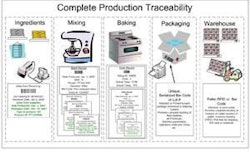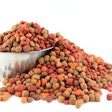Overweight and obesity are linked to insulin sensitivity and, subsequently in older cats, to an increased risk of developing diabetes mellitus. In the experimental cat population of the Institute of Animal Nutrition of the Vetsuisse Faculty, University of Zurich, an overweight phenotype in intact cats younger than one year became evident.
The aims of the study were to determine whether an association between insulin sensitivity and body condition score (BCS) or feline body mass index (FBMI) is already present during young adulthood and to test the hypothesis that the phenotype lean or overweight is significantly associated with monthly body weight during the growing period. Forty-one kittens from the breeding colony were weighed weekly and checked monthly (third to eighth month after birth) for BCS and FBMI. At eight months, they were classified into an overweight or lean phenotype based on BCS.
A significant association between the phenotype and body weight was obvious during the growing period from the third to the eighth months. At month eight, body fat content was measured and an insulin sensitivity index performed. Insulin sensitivity was significantly associated with BCS and body fat content but not with sex. Our data provide evidence that already in young intact cats, insulin insensitivity is significantly associated with BCS or a presumed phenotype of lean vs. overweight.
Source : T. Häring et al., 2012. Overweight and impaired insulin sensitivity present in growing cats. JAPAN online July 2012. doi: 10.1111/j.1439-0396.2012.01322.x

















